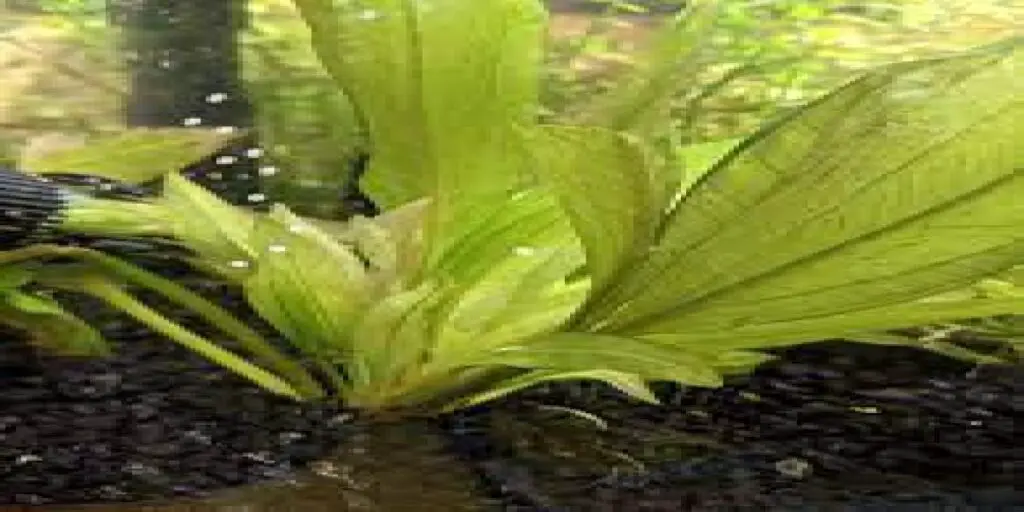Why your Amazon Sword Plants Turning Yellow and how to revive their vibrant green color. Expert tips and care advice inside this article.

What is an Amazon Sword Plant?
The Amazon sword plant (Echinodorus amazonicus) is a stunning aquatic plant that has captured the hearts of aquarium enthusiasts worldwide. With its vibrant green leaves and striking appearance, it’s no wonder that it’s a sought-after addition to planted aquariums. These plants can grow quite large, making them a focal point in any tank, and they provide essential oxygen and filtration benefits to aquatic environments.
Why is it a Popular Aquarium Plant?
Amazon sword plants are favored for several reasons:
- Aesthetic Appeal: Their lush green foliage adds a natural and refreshing look to your aquarium, creating a captivating underwater landscape.
- Water Quality Improvement: These plants act as natural water purifiers by absorbing excess nutrients, thus preventing algae overgrowth and maintaining water quality.
- Fish Habitat: The dense leaves of Amazon swords offer shelter and spawning sites for fish, promoting a healthier and more natural habitat.
- Beginner-Friendly: Amazon sword plants are relatively easy to care for, making them an excellent choice for both novice and experienced aquarists.
However, despite their resilience, Amazon sword plants can face issues, and one of the most common concerns is the dreaded yellowing of their leaves. In this guide, we’ll explore the possible causes of this problem and how to remedy it to ensure your Amazon sword plant thrives.
Common Causes of Amazon Sword Leaves Turning Yellow
Yellowing leaves on your Amazon sword plant can be distressing, but it’s crucial to identify the root cause to address the issue effectively. Let’s delve into some common reasons why these magnificent plants might be experiencing a yellow makeover.
Iron Deficiency
Iron is a vital micronutrient for Amazon sword plants. When these plants lack sufficient iron, their leaves can turn yellow. This condition is commonly known as “chlorosis.” Chlorosis occurs because iron is essential for the production of chlorophyll, the green pigment responsible for photosynthesis.
Solution: To remedy iron deficiency, consider using iron-rich fertilizers designed for aquarium plants. You can also add root tabs near the plant’s base to provide a steady supply of nutrients.
Nitrogen Deficiency
Nitrogen is another essential nutrient for Amazon sword plants. Inadequate nitrogen can lead to stunted growth and yellowing leaves. Nitrogen plays a crucial role in protein synthesis, a process vital for plant development.
Solution: Ensure your aquarium water has an adequate nitrogen supply. You can use nitrogen-based fertilizers specifically formulated for aquatic plants. Regular water changes can also help maintain balanced nutrient levels.
Potassium Deficiency
Potassium is vital for maintaining Amazon sword plant health. A lack of potassium can result in yellowing leaves and weakened overall growth. Potassium is involved in various physiological processes within the plant.
Solution: Use potassium-rich fertilizers designed for aquarium use to rectify potassium deficiency. Regular dosing and monitoring of potassium levels can help your plant regain its vibrant green color.
Lighting Problems
Lighting is a critical factor in plant growth. Inadequate or excessive lighting can lead to yellowing leaves and hinder photosynthesis. Amazon sword plants generally require moderate to high-intensity lighting.
Solution: Evaluate your aquarium lighting setup. Ensure that the light source provides sufficient intensity and duration. Adjustable LED lights can help you fine-tune the lighting conditions for your specific plant needs.
Other Factors
Algae
Algae can compete with your Amazon sword plant for nutrients and light, causing stress and yellowing leaves. Algae overgrowth is often a result of imbalanced aquarium conditions.
Solution: Regular maintenance, including water changes, substrate cleaning, and the use of algae-eating fish or invertebrates, can help control algae growth. Ensuring proper nutrient levels can also minimize algae competition.
Pests
Pests, such as snails or small crustaceans, can nibble on Amazon sword leaves, causing damage that appears as yellow or brown spots.
Solution: Identify and remove the pests from your aquarium. You can manually pick them out or use appropriate pest control methods that won’t harm your plants or fish.
Diseases
Fungal or bacterial infections can affect Amazon sword plants, manifesting as discolored or yellowing leaves. These infections are often a result of poor water quality or damage.
Solution: Quarantine affected plants to prevent the spread of disease. Improve water quality and ensure that your plants are not physically damaged.
How to Fix Yellow Amazon Sword Leaves
Diagnose the Problem
To effectively treat yellowing Amazon sword leaves, you must first identify the underlying cause. Carefully examine the plant and consider the factors mentioned above. Is it a nutrient deficiency, lighting issue, or something else entirely?
Treat the Problem
Once you’ve identified the problem, take appropriate action:
- For nutrient deficiencies, adjust your fertilization routine and consider adding root tabs.
- Address lighting issues by upgrading or adjusting your aquarium lighting.
- Combat algae, pests, or diseases as necessary using safe and effective methods.
Preventive Measures
Preventing yellow leaves is often more straightforward than treating them:
- Maintain stable water parameters.
- Regularly monitor and adjust nutrient levels.
- Provide appropriate lighting conditions.
- Quarantine new plants to prevent introducing pests or diseases.
- Practice good aquarium hygiene, including regular water changes and substrate cleaning.
You May Also Like:
- Aquarium Sand Turning Black: Common Causes
- How Many Platies In A 20 Gallon Tank
- How Many Shrimp In A 3 Gallon Tank
Conclusion
In conclusion, while yellowing Amazon sword leaves can be concerning, understanding the root causes and taking appropriate action can help your plants regain their vibrant green color. Remember to diagnose the problem, treat it effectively, and implement preventive measures to keep your Amazon sword plants thriving.